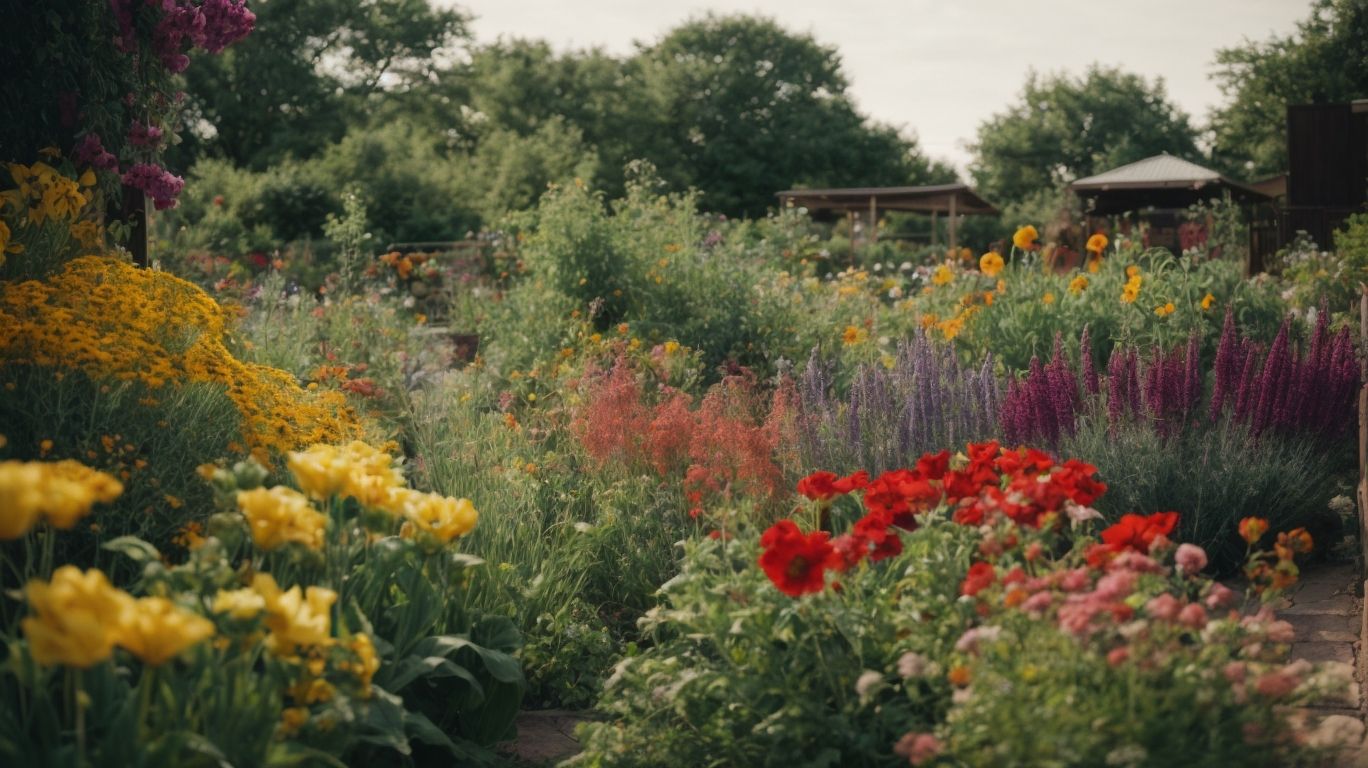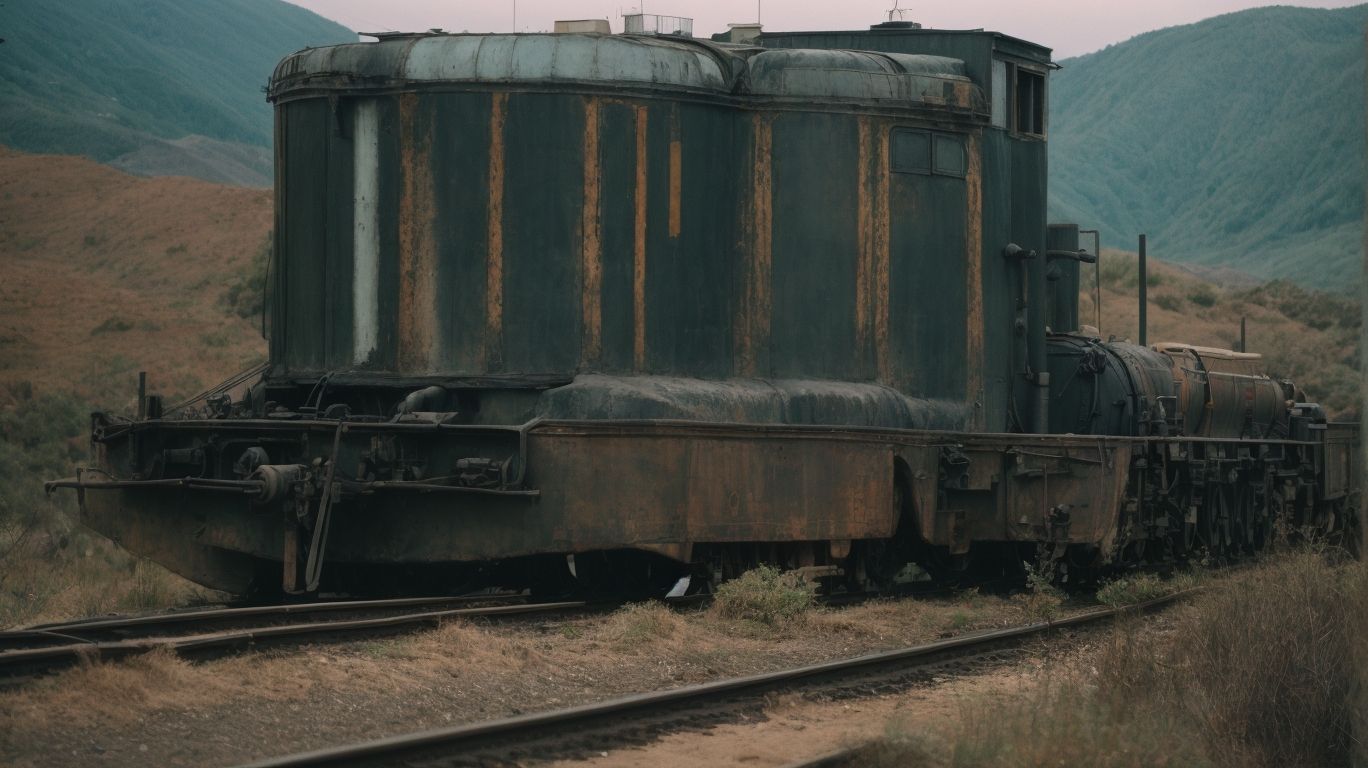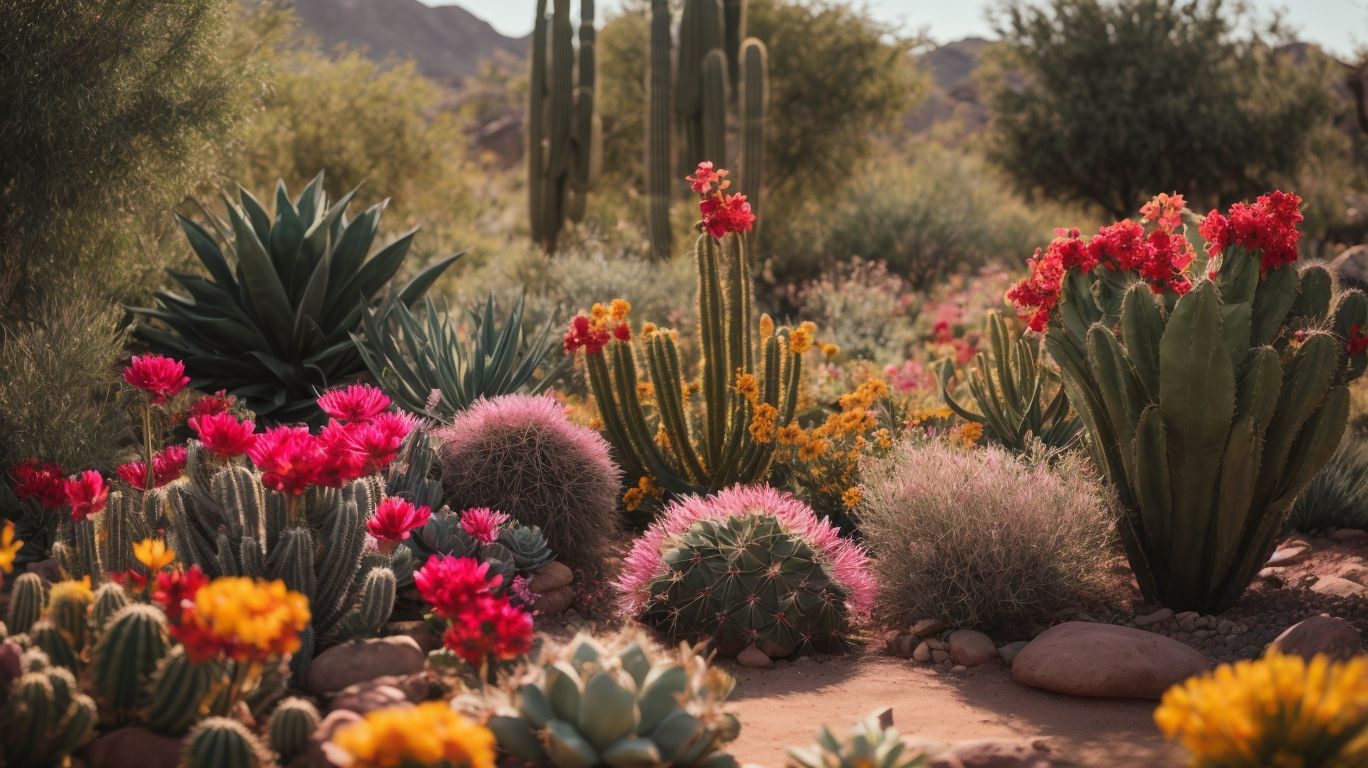Are you ready to take your gardening skills to the next level in 2018? Whether you’re a seasoned pro or just starting out, the key to a successful gardening season lies in understanding the unique factors that come into play in the Kansas climate. From weather patterns and soil quality to choosing the right plants and mastering essential gardening tips, this comprehensive guide will equip you with everything you need to create a thriving garden in the heart of the Midwest.
Join us as we explore the essential considerations before starting a garden, the best picks for Kansas gardeners, and expert tips to ensure a fruitful and rewarding gardening season.
Key Takeaways:
What to Consider Before Starting a Garden in Kansas

Credits: Monkinthegarden.Com – Ryan Robinson
When planning to start a garden in Kansas, there are several crucial factors to consider, including the climate and weather patterns, soil quality and composition, as well as available space and sunlight.
Kansas experiences a diverse climate, with hot summers and cold winters, which can significantly impact the types of plants that thrive in the region. The soil in Kansas varies widely, ranging from fertile loam to clay, affecting drainage and nutrient retention. Understanding the sunlight exposure in different areas of the garden is essential for choosing the right plants. Factors like these play a vital role in determining the success of a garden in Kansas.
Climate and Weather Patterns
The climate and weather patterns in Kansas play a significant role in determining the types of plants that thrive in the region, influencing factors such as temperature, precipitation, and seasonal variations.
The state experiences hot summers with high temperatures, often reaching above 90°F, while winters can be cold and dry with temperatures dropping below freezing. These extreme temperature fluctuations can pose challenges for gardening, requiring careful selection of:
- heat-tolerant plants for summers
- cold-resistant species for winters
The varying precipitation levels across Kansas impact plant selection, with some areas receiving higher rainfall, making it suitable for moisture-loving plants, whereas other regions may require drought-resistant species due to lower rainfall. Understanding these climatic nuances is crucial for successful gardening in Kansas.
Soil Quality and Composition
The soil quality and composition in Kansas contribute to the overall health and growth of plants, with factors such as pH levels, nutrient content, and texture playing pivotal roles in successful gardening endeavors.
Optimal pH levels are crucial, as they influence the availability of essential nutrients to plants. An ideal nutrient content, including critical elements like nitrogen, phosphorus, and potassium, fosters vigorous growth and abundant harvests. The soil texture impacts water retention and aeration, both vital for root development and overall plant vitality. Gardeners in Kansas must assess and amend their soil composition to ensure it meets the specific requirements of the plants they wish to grow, ultimately leading to thriving gardens and bountiful yields.
Available Space and Sunlight
The availability of space and sunlight directly influences the types of plants that can be grown in a Kansas garden, with considerations for sun exposure, shade patterns, and spatial constraints shaping the overall gardening experience.
When planning a garden in Kansas, it’s essential to take full advantage of the available sunlight by strategically placing plants according to their light requirements. Understanding the sun patterns throughout the day and the changing seasons helps in determining the ideal placement for sun-loving plants. Additionally, shaded areas can be utilized for plants that thrive in lower light conditions. Spatial constraints play a crucial role in optimizing the garden layout, and proper spacing between plants ensures efficient utilization of the available area. Careful consideration of sun exposure, shade, and spatial arrangement contributes to a thriving and visually appealing garden in Kansas.”
Choosing the Right Plants for Your Kansas Garden

Credits: Monkinthegarden.Com – Carl Flores
Selecting the right plants for a Kansas garden involves evaluating factors such as native versus non-native species, drought-tolerant varieties, and cold-hardy options to ensure optimal growth and sustainability.
Native plants, like purple coneflower and little bluestem, offer numerous benefits. They are well-adapted to the local ecosystem, requiring less maintenance and watering.
Non-native species, such as Japanese maple and lavender, can add diversity and visual interest to the garden. When selecting plants, it’s crucial to consider their ability to withstand Kansas’ variable weather conditions, making drought-tolerant and cold-hardy options essential for long-term success.
Native Plants vs. Non-native Plants
The choice between native and non-native plants for a Kansas garden entails considerations of local biodiversity, ecological impact, and adaptability to the regional climate, influencing the overall sustainability and harmony of the garden ecosystem.
Native plants, being adapted to the local environmental conditions, generally require less maintenance, watering, and fertilization, making them an eco-friendly choice. Their deep root systems also help prevent soil erosion. They provide critical habitats for local wildlife, supporting the overall biodiversity in the area.
On the other hand, non-native plants, while they may offer diversity and aesthetics, can sometimes outcompete native species, disrupting the delicate balance of the local ecosystem. Therefore, a conscious selection of plants can significantly impact the health and resilience of the garden as well as the surrounding environment.
Drought-tolerant Plants
In the arid conditions of Kansas, the inclusion of drought-tolerant plants in a garden is essential for conserving water resources and maintaining sustainable, resilient plantations.
These plants have evolved to thrive in low water conditions, making them well-suited for the climate in Kansas. By selecting drought-tolerant plants, gardeners can reduce their overall water usage, contributing to water conservation efforts in the state. These plants exhibit remarkable resilience, adapting to the challenging conditions and requiring minimal maintenance once established.
By incorporating a variety of drought-tolerant plants in the garden, individuals can create a beautiful and diverse landscape, showcasing the abundance of options available. From colorful flowering perennials to hardy shrubs and ornamental grasses, there’s a wide selection to suit different preferences and design themes.
Cold-hardy Plants
The resilience of cold-hardy plants is a valuable asset for Kansas gardens, providing the ability to withstand frost, chilly temperatures, and seasonal fluctuations, ensuring year-round vibrancy and endurance.
Cold-hardy plants are well-suited for Kansas gardens, as they can withstand the harsh winter conditions, ensuring that the garden remains lush and vibrant throughout the year. These frost-resistant plants exhibit remarkable resilience against the cold, allowing them to thrive even in the most challenging weather. Their ability to endure the fluctuating temperatures and varying seasons makes them an ideal choice for gardeners seeking sustainable growth and low-maintenance landscaping solutions.
Tips for Successful Gardening in Kansas

Credits: Monkinthegarden.Com – Eugene Scott
Achieving successful gardening outcomes in Kansas requires implementing effective practices such as proper watering techniques, mulching for moisture retention, fertilizing for nutrient-rich soil, and pest and disease control measures.
In terms of watering, it is crucial to pay attention to the specific needs of the plants and the local climate. In the warm and dry conditions of Kansas, it’s important to water deeply but less frequently to encourage deep root growth and reduce evaporation. Mulching, using materials like straw or wood chips, helps to conserve moisture, regulate soil temperature, and suppress weed growth. Regular fertilization is vital to replenish nutrients that may be depleted due to the region’s soil composition. It’s best to use organic fertilizers to improve soil structure and promote healthy microbial activity.
In terms of pest and disease control, it’s beneficial to regularly inspect plants for signs of infestation or infection. Natural remedies like companion planting or introducing beneficial insects can help manage pests, and selecting disease-resistant varieties can reduce the risk of plant diseases. To effectively combat common pests in Kansas, it’s important to understand their life cycles and employ targeted prevention methods. By integrating these practices into your gardening routine, you can create a thriving and sustainable garden in the unique climate of Kansas.
Proper Watering Techniques
Mastering proper watering techniques is essential for Kansas gardening, encompassing strategies for efficient irrigation, moisture management, and hydration optimization for diverse plant species.
In the arid climate of Kansas, consistent and effective watering is vital to ensure the health and growth of plants. Implementing irrigation methods such as drip irrigation or soaker hoses can significantly reduce water wastage and deliver moisture directly to the plant roots.
Considering the moisture needs of various plant types, from drought-resistant to moisture-loving species, is crucial for maintaining a thriving garden. Proper hydration is not only essential for the plant’s health but also influences their productivity and aesthetic appeal in the garden.
Mulching for Moisture Retention
The application of mulching serves as a valuable practice for moisture retention in Kansas gardens, promoting soil health, temperature moderation, and weed suppression for sustained plant vitality.
By employing mulch as a protective cover over the soil, gardeners in Kansas can effectively reduce evaporation, helping to retain moisture essential for plant growth. This, in turn, contributes to the soil’s overall health, fostering a favorable environment for beneficial microorganisms.
Mulch acts as a natural insulator, regulating soil temperature to provide a more stable and moderate growing environment for plants, especially in the variable Kansas climate. The use of mulch aids in controlling weeds by preventing weed seeds from reaching the soil and inhibiting their germination effectively.
Fertilizing for Nutrient-rich Soil
Fertilizing practices play a pivotal role in cultivating nutrient-rich soil for Kansas gardens, fostering optimal plant nutrition, growth, and overall vitality within the garden ecosystem.
By providing essential nutrients such as nitrogen, phosphorus, and potassium, fertilizing boosts the development of robust roots, stems, leaves, and flowers, leading to healthier and more abundant harvests. The enrichment of the soil through fertilization promotes beneficial microbial activity, improving soil structure and enhancing its ability to retain moisture and support plant growth. Consequently, regular and appropriate fertilization is key to sustaining a thriving and productive garden in Kansas.
Pest and Disease Control
Effective pest and disease control measures are integral for safeguarding the health and resilience of plants in Kansas gardens, involving proactive strategies, monitoring, and targeted interventions to maintain optimal garden conditions.
As the climate and environmental conditions in Kansas provide a conducive environment for the proliferation of pests and diseases, implementing proactive measures is crucial. These may include utilizing resistant plant varieties, promoting plant health through appropriate watering and fertilization, and practicing crop rotation.
Regular monitoring of garden plants for signs of infestation or disease is essential in order to detect and address issues at an early stage. When interventions are necessary, targeted methods such as biological controls, natural predators, and organic treatments can be employed to minimize the use of harmful chemicals and maintain ecological balance.
Best Plants to Grow in a Kansas Garden
A Kansas garden offers an ideal environment for cultivating a diverse range of plants, including tomatoes, peppers, squash, sunflowers, coneflowers, and milkweed, each contributing unique attributes and visual appeal to the garden landscape.
Tomatoes thrive in the rich Kansas soil, offering juicy, flavorful fruits when given adequate sun and water. Peppers, including bell peppers and hot varieties, add a pop of color and zest to garden dishes. Squash, such as zucchini and butternut, spread across the ground, producing abundant harvests. Sunflowers, with their towering stalks and vibrant blooms, bring a cheerful, sunny presence to the garden.
Coneflowers, with their showy purple, pink, or white daisy-like blooms, attract pollinators and add a touch of wild beauty. Milkweed serves as a vital host plant for monarch butterflies, making it an essential inclusion for supporting biodiversity and conservation efforts in the Kansas ecosystem.
Tomatoes
Growing tomatoes in a Kansas garden yields bountiful harvests of flavorful, versatile fruits, with considerations for cultivar selection, soil preferences, and seasonal care contributing to successful cultivation.
When choosing tomato cultivars for Kansas gardens, it’s essential to consider the climate and growing conditions. Opting for varieties like ‘Celebrity’, ‘Early Girl’, or ‘Big Beef’ that are well-suited to the region’s warm summers can result in higher yields. Ensuring adequate sunlight, well-drained soil, and regular watering and fertilization play crucial roles in nurturing healthy tomato plants.
As the seasons change, adjusting care practices to account for temperature fluctuations and potential pests or diseases is paramount for a successful harvest.
Peppers
The cultivation of peppers in a Kansas garden introduces a spectrum of vibrant flavors and culinary versatility, requiring attention to soil preferences, climate suitability, and cultivation techniques for optimal growth and yield.
Peppers thrive in well-drained, fertile soil with a slightly acidic pH, ideally around 6.0-6.8, ensuring sufficient nutrient uptake and root development. Kansas gardens can benefit from incorporating organic matter, such as compost or well-rotted manure, to enhance soil structure and water retention.
Considering the climate, peppers flourish in warm temperatures, so selecting sunny, sheltered locations with good air circulation is essential for their growth in Kansas. Gardeners should monitor and provide protection against sudden temperature drops or excessive heat to prevent stress on the plants.
In terms of cultivation, starting peppers indoors and then transplanting them to the garden after the last frost date is a common practice in Kansas. Proper spacing, adequate watering, and occasional feeding with a balanced fertilizer can promote healthy, productive pepper plants for an abundant harvest.
Squash
The cultivation of squash in a Kansas garden introduces a diverse array of culinary and decorative possibilities, requiring attention to growth habits, pollination, and seasonal care for a thriving harvest.
When cultivating squash in Kansas gardens, one must consider the growth habits, which often include a sprawling nature and large leaves that require ample space and sunlight to flourish. These plants are dioecious, meaning separate male and female flowers, so understanding the pollination requirements is crucial for a successful yield.
Throughout the growing season, it is essential to provide consistent watering, weed control, and protection from common pests, such as squash bugs and vine borers. With proper attention to these seasonal care practices, gardeners in Kansas can enjoy a bountiful harvest of various squash varieties, including zucchini, butternut, acorn, and spaghetti squash.
Sunflowers
The cultivation of sunflowers in a Kansas garden introduces vibrant, ornamental blooms and potential harvests, requiring considerations for growth preferences, soil suitability, and seasonal care for optimal visual impact and yield.
When cultivating sunflowers in a Kansas garden, it’s essential to choose a sunny spot with well-drained soil to ensure their growth preferences are met. Sunflowers thrive in full sun, and they benefit from fertile, loamy soil with a pH of 6.0 to 7.5. Consider adding organic matter to improve soil fertility and moisture retention.
Regular watering and mulching can help maintain soil moisture levels, especially during dry spells.
Coneflowers
Coneflowers add enduring beauty and pollinator appeal to a Kansas garden, necessitating attention to growth requirements, soil adaptability, and seasonal care for sustained floral displays and ecological contributions.
Growing coneflowers in Kansas gardens requires full sun and well-drained soil, preferably with a pH range of 6.0 to 8.0. These hardy perennials are tolerant of a wide range of soil types, including loamy, sandy, or clay soils, making them adaptable to various garden environments.
When cultivating coneflowers, it’s important to ensure adequate air circulation to prevent diseases such as powdery mildew. Regular watering, especially during dry spells, and deadheading spent blooms can prolong the flowering period and promote continuous blooming throughout the summer.
Milkweed
The cultivation of milkweed in a Kansas garden supports native pollinators and contributes to ecological diversity, with considerations for growth factors, habitat suitability, and seasonal care playing crucial roles in fostering a biodiverse garden ecosystem.
When cultivating milkweed in Kansas, it’s essential to choose a sunny location with well-drained soil, as milkweed thrives in full sunlight. Ensuring adequate spacing between plants allows for optimal airflow and prevents overcrowding.
In terms of habitat considerations, milkweed is particularly suited to the Kansas climate, as it is tolerant of drought conditions. Regular watering, especially during dry periods, is vital for promoting healthy growth and blooming. Pruning any dead or damaged foliage can help maintain the plant’s vigor and appearance. With appropriate care throughout the seasons, Kansas gardeners can enjoy the beauty of milkweed while supporting local ecosystems.
Conclusion and Final Tips for a Successful Gardening Season in Kansas
In conclusion, embarking on a gardening journey in Kansas holds the promise of a vibrant, rewarding season, provided that essential considerations, plant selections, and gardening practices are aligned to create an enduring, flourishing garden oasis.
For a successful gardening season in Kansas, it’s crucial to prioritize native plant species, considering their natural resilience to the local climate and soil conditions. Opt for perennials like Coneflowers, Prairie Smoke, and Wild Indigo, which not only thrive in Kansas but also attract native wildlife, contributing to the ecological balance.
Pay close attention to watering frequency, utilizing efficient irrigation techniques to conserve water and ensure optimal moisture levels for your plants. Embracing sustainable gardening practices and organic fertilizers can further enhance the long-term health of your garden, minimizing environmental impact while promoting abundant growth.
Frequently Asked Questions
1. What are the best picks for a successful gardening season in 2018 for Kansas gardeners?
The best picks for a successful gardening season in 2018 for Kansas gardeners include plants that are native to the region, have a high tolerance for drought and heat, and can thrive in the state’s climate and soil conditions. Some popular choices include sunflowers, coneflowers, hostas, and zinnias.
2. How can I prepare my garden for a successful season in 2018?
To prepare your garden for a successful season in 2018, it is important to start with a clean slate. Clear out any debris or dead plants from the previous season, test your soil for nutrient levels, and add compost or fertilizer as needed. It’s also a good idea to plan out your garden layout and choose the right plants for your specific area in Kansas.
3. What are some tips for maintaining a successful garden throughout the season?
Maintaining a successful garden throughout the season requires regular watering, fertilizing, and weeding. It’s also important to monitor for any pest or disease issues and address them promptly. Additionally, staying on top of pruning and deadheading can help keep your plants healthy and thriving.
4. Is it possible to have a successful garden in Kansas without using a lot of water?
Yes, it is possible to have a successful garden in Kansas without using a lot of water. Choosing drought-tolerant plants and incorporating mulch into your garden can help retain moisture and reduce the need for frequent watering. It’s also important to water deeply and infrequently rather than shallowly and frequently.
5. What are some common mistakes to avoid for Kansas gardeners in 2018?
Some common mistakes to avoid for Kansas gardeners in 2018 include over-watering, not fertilizing enough, and not considering the specific climate and soil conditions of the area. It’s also important to choose plants that are appropriate for your local growing zone and to space them properly to prevent overcrowding.
6. How can I extend my gardening season in Kansas?
To extend your gardening season in Kansas, consider using cold frames or row covers to protect plants from frost. You can also plant cool-season crops in the fall and cover them with mulch to protect them during the winter months. Additionally, utilizing indoor gardening techniques, such as container gardening or grow lights, can allow you to grow plants year-round.


